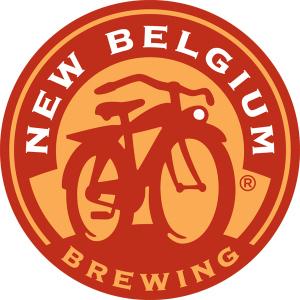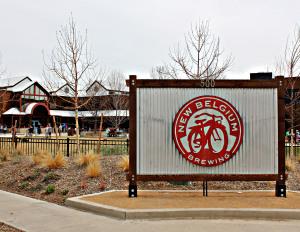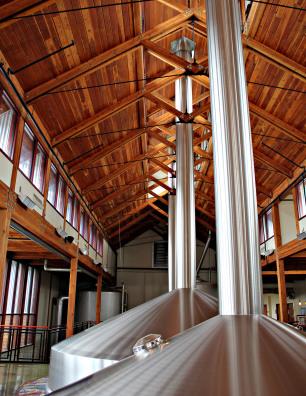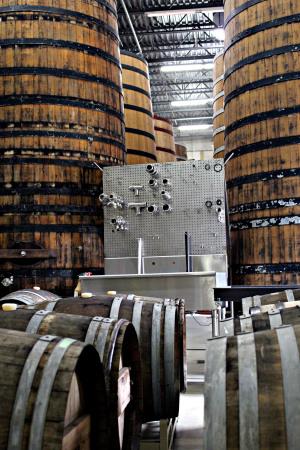 The drive from Denver to Ft. Collins is about an hour long, but is a necessary journey for any true beer lover. Originally called Camp Collins, the outpost was established in 1862 to protect travelers and settlers along the Colorado branch of the Overland Trail. Just two year later, in 1864, a flood destroyed the camp and the U.S. Army decided to reposition the settlement and call it Ft. Collins. Today, the city is known for its beer culture and as the home of several of Colorado’s most noted breweries.
The drive from Denver to Ft. Collins is about an hour long, but is a necessary journey for any true beer lover. Originally called Camp Collins, the outpost was established in 1862 to protect travelers and settlers along the Colorado branch of the Overland Trail. Just two year later, in 1864, a flood destroyed the camp and the U.S. Army decided to reposition the settlement and call it Ft. Collins. Today, the city is known for its beer culture and as the home of several of Colorado’s most noted breweries.
While at the Riverside Craft Beer Festival, I mentioned to the local New Belgium representative that I was considering a visit to my daughter in Denver. He offered to set up a tour of the brewery in Ft. Collins if I made it out there. So, when the plans were set, I took him up on his offer. And, am I glad I did.

The building itself is at once modern and traditional with a three-story high roof over the entrance, plenty of glass and lots of warm reddish brown wood paneling. It evokes a feeling of a mountain cabin while also displaying a modern design sensibility. The mix of old and new is thoroughly pleasing to the eye and immensely inviting.
Upon entering, visitors are greeted by a tour check-in desk in front of a buzzing hive of activity that is the brewery’s taproom. The design esthetic carries from the outside in to the taproom with more warm wood and a huge glass wall that shows off part of the brewery in the back. The bar stretches from one end of the main room to the other and a chalkboard behind it announces the beers currently available for tasting. On the left is another smaller tasting room with another bar and tables for sitting and enjoying pints.
At the check-in desk, we told the hostess our names, she checked our IDs and told us – my wife and daughter were along for the tour — she would let our tour guide know we had arrived. Within moments, Penelope Gilland, a long-time employee owner at New Belgium, appeared and ushered us to the bar for beers to drink while on the tour. I chose a raspberry treatment of their sour base beer Oscar – it was delicious, by the way – and we were on our way.
Our first stop was just around the corner from the bar, but it was a very important first step and set the tone for the tour. In a small hallway, mounted to the wall is a display case that holds the relic upon which the brewery was built, the actual beer journal used by Jeff Lebesch on his beer vision quest through Belgium in 1988. In that notebook, Lebesch jotted down the original recipe for Fat Tire the company’s flagship amber ale.
As Penelope explained the origins of the company and how, after just a few years of homebrewing, Lebesch decided to sell his beers to local Ft. Collins bars it became apparent the pride she, and every other New Belgium employee I have ever met, have in their work. The idea that a brewery that began in a basement with self-distribution by his wife in the family station wagon could flourish to become the company that is now the nation’s fourth largest craft brewery in the United States is astounding and wonderful at the same time.

But, impressive as the cathedral was, the fouder (pronounced food-er) room was my favorite. Fouders are large wooden fermentation tanks used to age sour beers. New Belgium’s fouder room, known as “The Woods,” holds 64 wooden vessels of many shapes and sizes. Each contains a different living beer in varying stages of completion.

After our walk in The Woods we returned to the taproom for a few more cold beers and to talk about our experiences on the tour. We enlisted the help of another “Mothership” – the name New Belgium insiders have given to the main brewery – visitor for a group picture with our guide, Penelope and mulled our next move.
The consensus was overwhelming that New Belgium would be a staple for future visits to Colorado and that of all the brewery tours we had taken together, the Ft. Collins New Belgium tour was among the best.
Advertisements